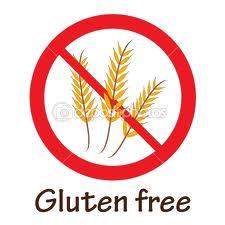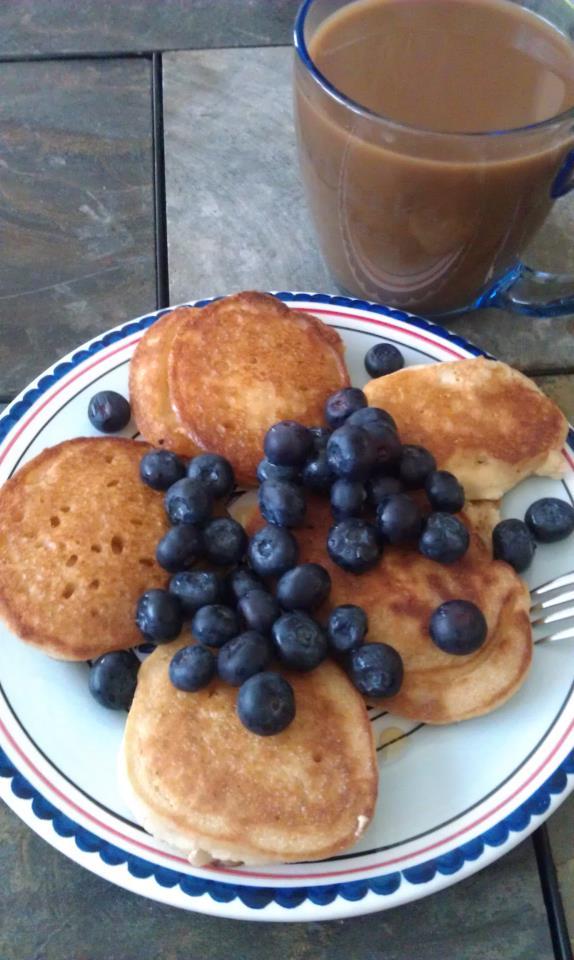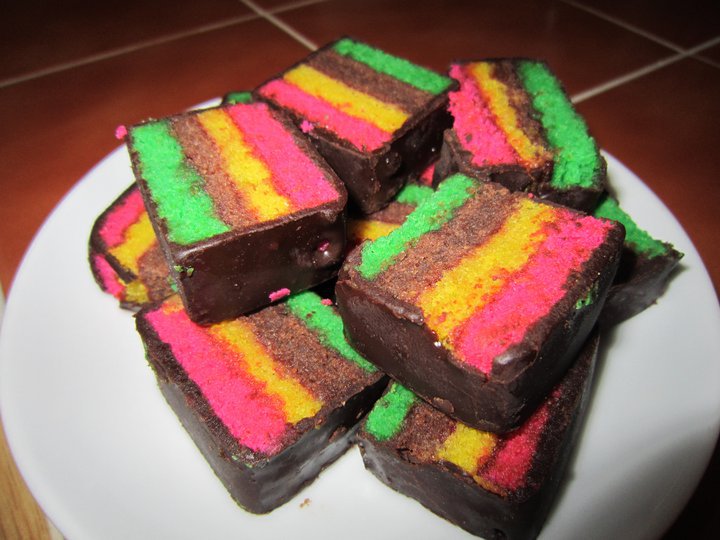Gluten Free
 Disclaimer: In no way I consider myself an expert on gluten free diagnosis. Please consult your medical care provider and/or a nutritionist before starting a gluten free diet or choosing the products.
Disclaimer: In no way I consider myself an expert on gluten free diagnosis. Please consult your medical care provider and/or a nutritionist before starting a gluten free diet or choosing the products.
I’m not sure if I have Celiac disease as, when I had undergone testing, I had been off gluten for several months, which you are not supposed to do (you have to continue consuming regular amount of gluten throughout the whole testing process), but I didn’t know about it so my tests came back inconclusive. At the end, it doesn’t matter as I obviously can’t tolerate gluten, so, I do try to take as thorough precautions as I can, otherwise, I get sick with various physical ailments if I do. Also, I think gluten intolerance runs in my family: after so many years of my prompting, my mom, in her early 70s, has finally gotten off gluten and has seen some of the symptoms she’s had for years gradually getting better. We’re now working on getting my grandma (my mom’s mom), who is in her mid 90s, to stop eating gluten, but, even with the reduction of gluten in her diet, we’ve already seen some improvement. That says, gluten sensitivity is running in my family. I’m yet to test my son, and he is almost 20, though, according to him, he’ll not give up his bread (no matter that he eats all my baked goods gluten free and never complains, so, it’s more of a convenience, and stubbornness, than taste matter). We have agreed though that he is doing testing at some point.
If you tested positive for Celiac or wheat allergy, educating yourself and being extremely diligent about your food choices is a must. This is just a very general information about gluten-free lifestyle and the products I like.
For complete information about Celiac disease or gluten intolerance and to get a full list of gluten free foods, please visit these websites:
The first step in identifying if gluten is your problem is to do a thorough testing. Start with simple and readily available, see your medical care provider to have an IgE blood panel testing and Celiac testing (remember, you have to be consuming regular amount of gluten, an equivalent of at least four slices of bread a day, to be adequately tested for Celiac, therefore, do not start a gluten free diet before doing all the testing, but do also note that Celiac tests have a higher rate of false negative results). You may further confirm the results with an intestinal biopsy to get a formal diagnosis of Celiac disease. If you do test positive, I recommend finding a GI or other medical practitioner who specializes in Celiac disease. Finding a good nutritionist and/or a naturopath is also a must (in my eyes).
If all your tests came back negative, you may want to do further (alternative) testing. None of it is covered by medical insurance, unfortunately. If you want to know your lifetime chance of developing Celiac, you can do MyCeliacID (a simple at-home saliva test, can be done while eating gluten or not as it’s genetic predisposition only). I decided not to do it as the end result would be the same – I have to stay off gluten, most likely lifetime. There are other saliva and stool tests that you may do with your healthcare provider agreement.
If you suspect that intolerance rather than Celiac or gluten allergy is the culprit of your problems (like in my case), you may test for IgG food panel and/or kinesiology muscle test. IgG/ELISA food panel testing is different from IgE testing, IgG tests for so called “delayed reaction allergens” or intolerances where symptoms may develop over the next few days to weeks after consuming a specific allergen or allergens (or become chronic if such foods are ingested on a regular basis), where IgE panel shows the “immediate reaction” allergens more known to the general public. If your medical doctor doesn’t offer such testing, naturopathic provider is usually familiar with IgG panel. Kinesiology/muscle test is often done by a naturopath or a chiropractor specifically trained for it. It’s a non-invasive way to examine your body’s imbalances and responses to specific foods and other substances. The test is often considered controversial and regarded as “pseudo-science” (if you only go with the Western way of the science definition), but I can attest myself that it pinpointed the exact same food issues found by IgG blood test and further explored some other problems I was experiencing at the time.
The last and probably the most simple technique is an elimination diet. Go off gluten for at least two-three months (you need that long for your body to properly eliminate all stored gluten sources and reduce the state of inflammation). If your symptoms (whatever they are) disappear or decrease, then gluten may be a source of your problems. Gluten sensitivity is often related to a vast variety of symptoms: digestive problems, asthma/allergy, fibromyalgia, migraines, joints pains, arthritis, eczema, obesity, to name a few. Consistent gluten consumption leads to a constant inflammation state responsible for hundreds of other diseases. Even if you think gluten may not be your issue, as we age, we produce fewer enzymes to properly digest gluten (and many other common allergens such as dairy), therefore, I believe anybody can improve their health and wellbeing by simply cutting the amount of wheat products consumed every day and substituting them with naturally gluten free foods.
Foods containing gluten ( a very short, general list)
wheat, barley, rye, spelt, semolina, durum, wheat/barley grass, tabbouleh, couscous, malts, soy sauce, beer, wheat based spirits, gravy, all kind of thickening agents and sauces, some soups and cold cuts, frozen/fast foods dusted with flour, etc. (oats and corn are often contaminated with wheat, therefore, choose gluten free variety) – educate and double check, if in doubt, do not eat.
Gluten free grains/flours
rice, millet, buckwheat, amaranth, quinoa, sorghum, arrowroot, teff, tapioca, almond, cassava, tigernut, walnut, pecan, cashew, potato starch, coconut, bean, soy (more on soy on Healthy Living page), gluten free oats, and corn.
 Living gluten free is not, by any means, a boring and restrictive life. There are a great variety of products available on the market, and more and more new items are being presented every month, or more and more regular stores starting catering to a gluten free community, you no longer have to do all your shopping as specialty stores like Whole Foods. Old companies like Betty Crocker and Chex cereals offer gluten free versions right along their regular items. You can lead a completely normal life (with the adequate information and planning), visit your friends and family, eat out and even travel (I always pack a small suitcase full of GF breads, pasta, cereals, snacks, desserts and even pancakes mix to substitute the regular offerings, and I’m yet to find a hotel or a restaurant that was unwilling to accommodate my needs.
Living gluten free is not, by any means, a boring and restrictive life. There are a great variety of products available on the market, and more and more new items are being presented every month, or more and more regular stores starting catering to a gluten free community, you no longer have to do all your shopping as specialty stores like Whole Foods. Old companies like Betty Crocker and Chex cereals offer gluten free versions right along their regular items. You can lead a completely normal life (with the adequate information and planning), visit your friends and family, eat out and even travel (I always pack a small suitcase full of GF breads, pasta, cereals, snacks, desserts and even pancakes mix to substitute the regular offerings, and I’m yet to find a hotel or a restaurant that was unwilling to accommodate my needs.
Don’t stew, substitute is my motto!
Some of my favorite gluten free products
I do a lot of baking and naturally have my favorite gluten free flours/mixes. The ones I use the most and like the best are Cup4Cup and King Arthur, followed by Authentic Foods mixes. These mixes have a finely ground rice flour as the base that produces great taste and texture similar to wheat flour. Other companies have now followed the lead so more and more gluten free mixes are coming to grocery shelves. I suggest you try different mixes and flours to choose which you like the best. These are just my suggestions account to my personal taste.
Cup4Cup www.cup4cup.com is a complete mix (already has xanthan gum in it but also has milk powder so may not be suitable for a dairy-free option). The mix is sold at Williams-Sonoma, or can also be found now at Amazon or Vitacost. I use it mostly for pies, tarts, turnovers, donuts, or any things that call for rolling the dough, the mix has a lot of xanthan gum in it that helps the dough “stick” together but may “deflate” cakes or muffins a bit. Try Ad Hoc waffle mix made with Cup4Cup flour, delicious! I love Cup4Cup so much that I even got some “love” back 🙂 . Chef Lena Kwak, who along with Chef Thomas Keller, developed the flour, visited my blog and featured two of my recipes on their site. It was truly an honor! King Arthur mix is very similar to Cup4Cup but it’s dairy free and has an option to be bought with or without xanthan gum. I use it the most for cakes, muffins or any other goods that need to rise.
King Arthur Measure per Measure gluten free flour www.kingarthurflour.com is similar to Cup4Cup, however, I like it better for cakes and other baked goods that require better rising. Original King Arthur gf flour contains no xanthan gum, so it’s good for yeast dough baking and breads.
Authentic Foods www.authenticfoods.com mixes either do or do not contain xanthan gum so check which ones you like the best, they make great cakes, cupcakes, muffins or anything that needs to rise and hold the shape. They also have good pre-made mixes for cakes, muffins and pies as well as super-fine single flours such as rice if you want to make your own flour mixes.
Gluten free yeast dough requires very different techniques comparing to regular gf baking. It also requires different gf flours from the ones you may use for cakes and other regular baked goods. Many brands carry gf bread flour or pastry mixes that are generally higher in starch content and do not contain xanthan gum. My other suggestions would be: using premium instant yeast, add 1/4-1/2 tsp more yeast than the recipe calls for, using carbonated water and all warm (but not hot as not to kill the yeast) liquids, sifting all flours a few times, using a scale to weigh the flours, lightly spooning in all flours rather then scooping them in, being gentle handling already risen yeast dough as it’s very fragile.
I’m confident that you will find many gluten free recipes here that will become your favorite just like they’ve become mine!
Happy baking!


